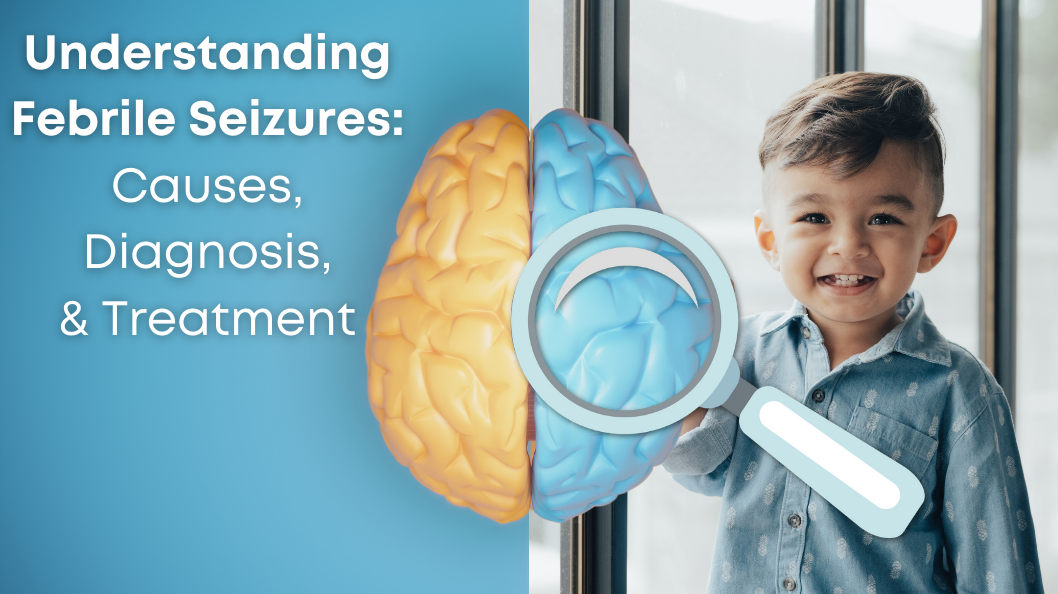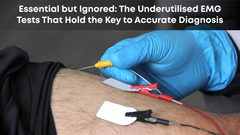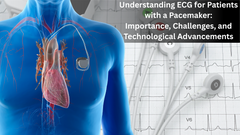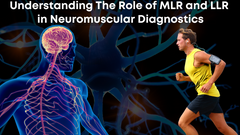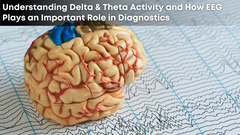Understanding Febrile Seizures: Causes, Diagnosis, & Treatment
Febrile seizures are a common and often alarming occurrence in young children, typically associated with fever but not necessarily indicating a severe health problem. Despite their often-benign nature, febrile seizures require careful evaluation and management to ensure the child's health and provide peace of mind to concerned parents. In this article, we will explore what febrile seizures are, their causes, diagnosis, the role of EEG in their evaluation, treatment options, and how Clarity Medical's portable EEG devices are transforming the diagnostic landscape.
What is a Febrile Seizure?
A febrile seizure is a convulsion triggered by fever in infants and young children. These seizures usually occur between the ages of 6 months and 5 years and are most common around 18 months. Febrile seizures are classified into two main types:
> Simple Febrile Seizures: These are generalized seizures that last less than 15 minutes and do not recur within 24 hours. They involve the entire body and are the most common type.
> Complex Febrile Seizures: These seizures last longer than 15 minutes, may recur more than once in 24 hours, and can be focal, affecting only one part of the body.
Although febrile seizures can be frightening, they are generally harmless and do not usually lead to long-term health issues or epilepsy.
What Causes Febrile Seizures?
The exact cause of febrile seizures is not entirely understood, but several factors contribute to their occurrence:
> Fever : The primary trigger for febrile seizures is a rapid rise in body temperature, often due to an infection such as a cold, flu, or ear infection.
> Genetic Predisposition: Children with a family history of febrile seizures are at a higher risk of experiencing them, suggesting a genetic component.
> Age: The developing brain in young children is more susceptible to convulsions triggered by fever.
> Infections and Vaccinations: Certain infections, such as roseola, or vaccinations that induce fever, like the MMR (measles, mumps, rubella) vaccine, can also precipitate febrile seizures.
How is Febrile Seizure Diagnosed?
Diagnosing a febrile seizure involves a thorough evaluation to rule out other causes of seizures and to ensure the child's overall health. The diagnostic process includes:
> Medical History: A detailed medical history is taken to understand the child's health background, any previous seizures, family history, and the circumstances surrounding the febrile episode.
> Physical Examination: A complete physical exam is performed to check for signs of infection or other underlying conditions.
> Laboratory Tests: Blood tests, urine tests, or lumbar puncture (spinal tap) may be conducted to identify infections or metabolic imbalances that could trigger seizures.
> Neuroimaging: In cases where a complex febrile seizure is suspected, imaging studies like a CT scan or MRI may be recommended to rule out structural abnormalities in the brain.
Role of EEG in Diagnosing Febrile Seizures
Electroencephalography (EEG) is a critical tool in the diagnosis and evaluation of seizures. EEG measures electrical activity in the brain and can help distinguish between different types of seizures and underlying conditions. Here's how EEG plays a role in diagnosing febrile seizures:
> Assessing Brain Activity: During an EEG, electrodes are placed on the scalp to detect electrical activity in the brain. This can reveal abnormal patterns that may suggest a seizure disorder.
> Differentiating Seizure Types: EEG helps differentiate between febrile seizures and other types of seizures, such as those caused by epilepsy or other neurological conditions.
> Evaluating Complex Cases: For complex febrile seizures, EEG can provide insights into whether there is a predisposition to epilepsy or other chronic seizure disorders.
> Monitoring Seizure Recurrence: EEG can be used to monitor children who experience recurrent febrile seizures, helping to guide long-term management and treatment decisions.
Treatment for Febrile Seizures
Treatment for febrile seizures focuses on managing the fever and ensuring the child's safety during a seizure. Key treatment approaches include:
> Fever Management: Administering fever-reducing medications like acetaminophen or ibuprofen can help lower the child's temperature and prevent further seizures. It is essential to address the underlying infection causing the fever.
> Seizure Management: During a seizure, it is crucial to ensure the child is in a safe position, such as lying on their side, to prevent injury. Parents and caregivers should avoid restraining the child or putting anything in their mouth.
> Medical Intervention: If a seizure lasts longer than five minutes, emergency medical services should be contacted. In such cases, healthcare providers may administer anticonvulsant medications like diazepam to stop the seizure.
> Follow-Up Care: Children who experience febrile seizures should have regular follow-up visits with their healthcare provider to monitor their health and address any concerns. Education and support for parents are also vital components of follow-up care.
How Clarity Medical's Portable EEG Devices are Impacting the Diagnostic Industry
Clarity Medical's portable EEG devices are revolutionizing the diagnostic industry, particularly in the evaluation and management of febrile seizures and other neurological conditions. These devices offer several benefits that enhance the diagnostic process:
> Portability and Accessibility: Clarity Medical's portable EEG devices can be used in various settings, including hospitals, clinics, and even at home. This flexibility ensures that children can be evaluated promptly, without the need for extensive travel or hospital stays.
> Ease of Use: Designed with user-friendly interfaces, these devices simplify the process of conducting EEG tests, making it easier for healthcare providers to perform and interpret results quickly and accurately.
> High-Quality Data: Clarity Medical's EEG devices provide high-resolution, reliable data, allowing for precise assessment of brain activity. This accuracy is crucial for diagnosing febrile seizures and distinguishing them from other seizure types.
> Real-Time Monitoring: Some portable EEG devices offer real-time monitoring enabling healthcare providers to observe and analyze brain activity as it occurs. This feature is particularly beneficial in acute settings where immediate intervention may be required.
> Cost-Effectiveness: By offering portable and efficient EEG solutions, Clarity Medical helps reduce the overall cost of neurological evaluations. This affordability increases access to essential diagnostic services, particularly in underserved or resource-limited areas.
> Patient Comfort: The compact and non-invasive nature of portable EEG devices ensures that the procedure is comfortable for young children, reducing anxiety and making the experience less daunting for both the child and their parents.
Conclusion
Febrile seizures, while alarming, can be managed effectively with prompt and accurate diagnosis, appropriate treatment, and supportive care. By leveraging advanced diagnostic tools like Clarity Medical's portable EEG devices, healthcare providers can offer timely and precise evaluations, ensuring that children receive the best possible care and parents gain peace of mind. As we continue to advance our understanding and technology, the outlook for children with febrile seizures remains positive, with a focus on minimizing risks and maximizing health and well-being.


